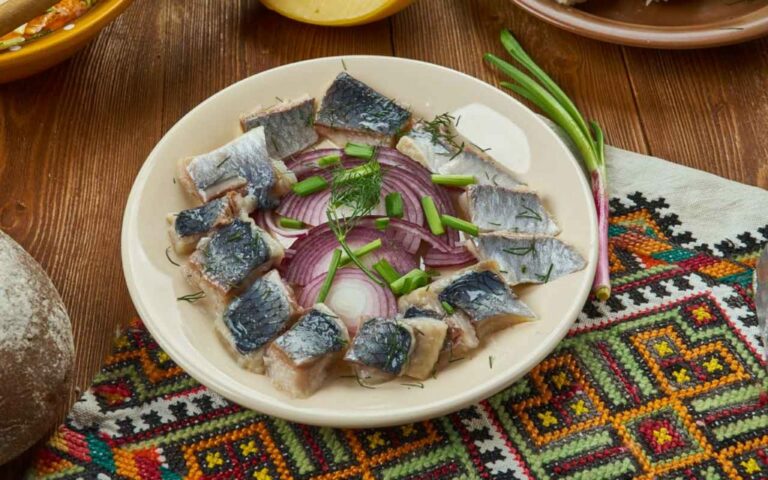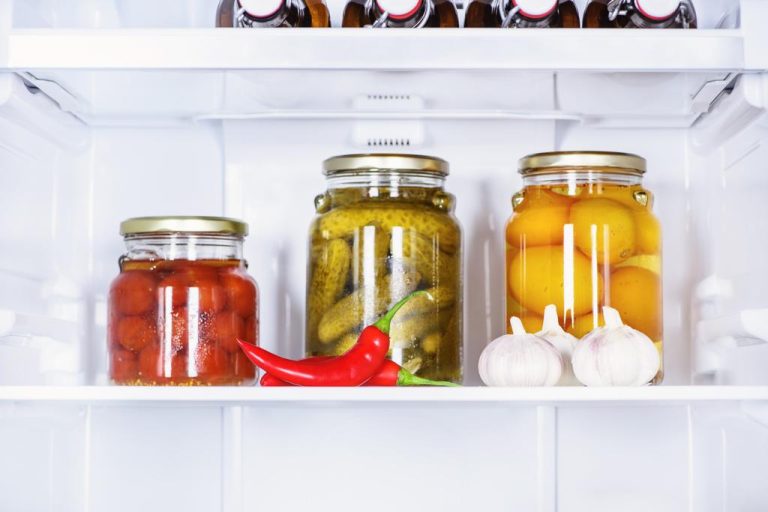Why preserve? Everyone has a refrigerator, tins last forever and anyway you can buy fresh every day. So it’s no wonder that hardly anyone knows how to preserve food themselves. Preserving, pickling or drying makes sense – and fun.
If you research the internet about preserving food, you will come across many websites dedicated to self-sufficiency and people who think they need to prepare for the coming apocalypse. Of course, in this case, long-lasting foods are essential. But it also makes sense for the average consumer with a fridge and supermarket around the corner to preserve food themselves: That way you know exactly what’s in it – and what’s not.
Everyone decides for themselves what they process – regional and seasonal organic goods, for example. In this way, you can store your supplies without plastic and possibly save energy if they don’t have to be in the fridge. In addition, the trip to the supermarket just before closing time is no longer necessary if you have delicious supplies at home.
Here are three simple ways to make food last longer through canning:
1. Preserving Food: Boiling
This preservation method is particularly suitable for fresh fruit and vegetables as well as ready-cooked dishes and is a simple way of preserving seasonal foods for a long time. Ideally, the food preserved in this way will keep for several years. The principle: When preserving, the food is filled into clean jars, which are then closed and heated. When the glass is heated, an overpressure is created, and when it cools down, a vacuum is formed. This keeps the jar airtight and protects the contents from germs.
If you only briefly heat the food at around 60 to 90 degrees, bacteria are killed while vitamins and nutrients are retained (pasteurized). However, what has been cooked in this way does not last quite as long.
The second option: You heat the glasses to over 100 degrees Celsius for a long time (sterilize). This kills any microorganisms that could spoil the food. Disadvantage: the fruit and vegetables lose some of their nutrients and vitamins, for example vitamin C. On the other hand, the food cooked in this way can be kept for a very long time – if you follow the temperature and time specifications exactly.
In principle, for both methods you only need fresh fruit or vegetables of your choice (if possible free of bruises or stains) and clean mason jars or screw-top jars. You should prepare the food for preservation by pitting or pitting, peeling and/or chopping it, depending on the type.
They are then filled into the clean jars, either raw or pre-cooked. You should leave at least one centimeter of space at the top to the edge. Then the well-closed jars are placed in a large saucepan in such a way that they do not touch each other. Fill the pot with water until the glasses are about three-quarters covered and then boil – depending on the method for about 10 to 45 minutes. Let cool, done.
Tip: Find a suitable recipe for exactly the fruit or vegetables you want to preserve and follow the instructions exactly.
2. Preserving food: Pickling
Canning is the process of preserving food in liquid—usually vinegar, oil, or alcohol. Pickling works well with most fruits, herbs, and vegetables.
In addition to cucumbers, other solid vegetables such as beans, carrots, cauliflower, onions, peppers, pumpkin or beetroot can also be pickled in vinegar. The vegetables should not have bruises or discolouration. The best way to prepare it is to clean it and cut it into pieces; You can leave cucumbers sprinkled with salt for a few hours.
For one kilogram of vegetables you need about half a liter of 5% vinegar and a quarter to half a liter of water with spices (e.g. mustard seeds, coriander seeds, bay leaves, juniper berries, pepper). From this you cook a broth and cook the vegetables in it. You then fill this hot into prepared, clean screw-top jars. Bring the sauce back to the boil and pour over the vegetables. The vegetables should be at least an inch or two covered with liquid.
Seal jars tightly and then allow them to steep for about 4 to 6 weeks before eating the pickles. The vinegared vegetables usually last for at least a few months if you store them in a cool and dark place.
Possible variant: You can add some sugar to the vinegar mixture, this also has a preservative effect.
Soaking in oil is not quite as effective as in vinegar, because oil does not preserve as well, but mainly protects against microorganisms. That’s why pickling works best if you preserve the food in a different way beforehand (e.g. dry it) or at least boil or roast it.
Pickling in oil is well suited for vegetables such as peppers, aubergines, mushrooms or artichokes, but also for feta cheese or cream cheese. For taste, you can add fresh or dried herbs or pepper, for example.
Again, it is important that you use clean screw-top jars. In addition, it is best to use oil for pickling that does not have a very strong taste of its own.
To prevent air bubbles from forming, fill the glass alternately with the food and the oil. The whole thing should be covered with oil by an inch or two. Seal the jar tightly and then store in a cool, dark place. The contents will last for about three to four months.
3. Preserving food: drying

One of the oldest and easiest ways to preserve food is to dry it. This works particularly well with fruit, vegetables, herbs, seeds, nuts, fish and meat. When drying or dehydrating food, most of its moisture is removed. This removes the breeding ground for the microorganisms and enzymes responsible for spoiling the products – the food lasts much longer.
However: In our latitudes, air drying is rather difficult due to the weather – and we don’t think it makes sense to heat the oven for hours or even to use special electric drying and drying devices. Therefore: You should only try drying if you have a warm, airy, dry and ideally even sunny place where the food can be stored for some time until it is dry (e.g. balcony, attic, tiled stove).
It is best to only use flawless products that you have washed beforehand and cut into pieces, slices or strips. Blanching vegetables beforehand shortens the drying time. You can either tie herbs into bundles or pluck their leaves.
Then spread the food out on a grid or grid and cover it with a thin cloth (gauze) to protect it from insects and dust. You can also thread them onto cords and hang them up.
How long it takes to dry depends on the food: fruit and vegetables are dried when they feel leathery, are pliable and no liquid escapes. Herbs should rub easily between your fingers.
The dried fruits, vegetables or herbs can be stored well in storage jars or screw-top jars. If you store them in a dark and dry place, they can last for several years thanks to this preservation.















